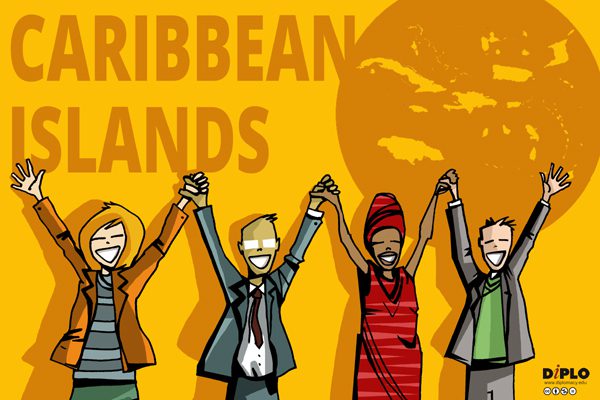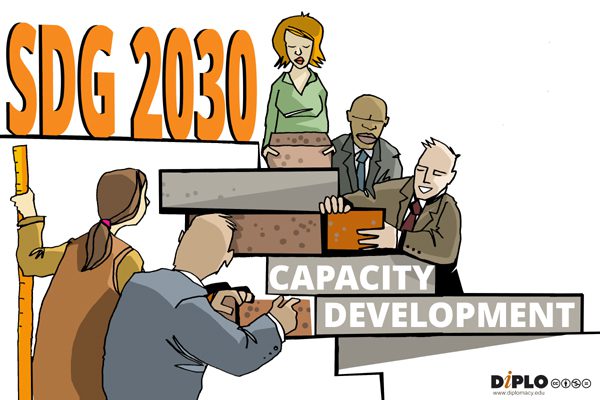Development diplomacy
What is development diplomacy?
Development diplomacy is an umbrella term that includes development cooperation, capacity building, and sustainable growth initiatives. It is a strategic tool used by countries to achieve diplomatic, political, and economic objectives. Often considered a component of soft power, development diplomacy fosters goodwill and contributes to global sustainable development goals (SDGs). It encompasses bilateral development assistance (direct support from one country to another), multilateral development aid (support provided through international organisations), and assistance via non-governmental organisations (NGOs). Development efforts can take various forms, including financial assistance, technical support, or capacity-building initiatives. It also involves diplomatic efforts and strategies to promote economic development, social welfare, and sustainable practices in developing countries, including negotiations, aid distribution, and the promotion of trade and investment.
Why is development diplomacy relevant?
Development diplomacy is crucial in today’s interconnected world for several reasons. Philosophically, it aligns with the principles of global solidarity and shared responsibility, promoting a collective approach to solving international challenges and achieving the United Nations’ sustainable development goals (SDGs). Practically, it helps stabilise regions in conflict, alleviate poverty, and support sustainable development. Development diplomacy also enhances a country’s international standing by building alliances and partnerships, as seen in historical examples like the Marshall Plan. It addresses global challenges such as poverty, inequality, and climate change, requiring collaborative solutions. However, it is not without criticism; some view it as a form of neo-colonialism or a tool for geopolitical competition, particularly in regions like Africa where major powers vie for influence.
How is development diplomacy performed?
Development diplomacy is carried out using various channels and approaches, including:
-
Bilateral development aid: Direct assistance from one country to another to address specific development needs.
-
Multilateral development aid: Assistance provided via international organisations such as the United Nations and the World Bank.
-
Support through NGOs: Non-governmental organisations often serve as intermediaries in delivering development assistance.
Development efforts take different forms, such as:
-
Financial support: Grants or loans provided to support development projects.
-
Technical assistance: Sharing expertise and knowledge to enhance local capabilities.
-
Capacity building: Initiatives aimed at strengthening institutions and local governance.
-
Negotiations: Securing agreements on trade, investment, and aid to represent developing countries’ interests.
-
Economic promotion: Attracting foreign direct investment (FDI) and facilitating access to international markets.
-
Lobbying: Influencing international policies and decisions impacting development efforts.
Where is development diplomacy performed?
Development diplomacy is conducted in several diplomatic spaces, including:
-
Bilateral agreements: Direct partnerships between two countries, often focused on specific needs or strategic interests.
-
Multilateral development aid: Facilitated through international organisations like the United Nations, the European Union, and the World Bank, involving multiple stakeholders.
-
Regional forums and initiatives: Collaboration among neighbouring countries to address shared challenges, promoting stability and development within a region.
When is development diplomacy evaluated?
Development diplomacy has evolved significantly over time, with key moments marking its development. The post-World War II era saw the rise of development diplomacy as a tool for reconstruction and development, exemplified by the Marshall Plan. The Cold War period further highlighted its strategic importance, as superpowers used development aid to gain influence in developing countries. In recent decades, development diplomacy has increasingly focused on sustainable development and climate change, reflecting global priorities. Evaluations of development diplomacy often occur in response to major international events or shifts in geopolitical dynamics.
Who are the actors in development diplomacy?
Development diplomacy involves a diverse range of actors, including:
-
National governments: Major donor countries such as the United States, China, and members of the European Union.
-
International organisations: Entities like the United Nations, World Bank, and IMF that facilitate multilateral development efforts.
-
Non-governmental organisations (NGOs): Often act as implementers of development projects on the ground.
-
Private sector entities: Companies that may contribute to development projects or provide funding.
-
Development agencies: Organisations such as USAID and regional development banks that provide funding frameworks and support development initiatives.
-
Non-state actors: NGOs, civil society organisations, and international organisations advocating for policies and implementing development projects.
Examples of development diplomacy:
-
European Union’s Eastern Partnership: The EU offers financial and technical assistance to Eastern European countries to encourage democratic reforms and align them more closely with EU standards and policies. This partnership aims to promote stability and prosperity in the region, serving both developmental and diplomatic purposes.
-
India’s vaccine diplomacy: During the COVID-19 pandemic, India supplied millions of vaccine doses to neighbouring countries and other nations, enhancing its diplomatic standing and promoting regional health security. This initiative, known as “Vaccine Maitri,” is a part of India’s commitment to global health and strengthened its international relationships.
-
China’s vaccine diplomacy: During the COVID-19 pandemic, China provided vaccines to numerous countries, including those in Africa and Latin America, to enhance its global influence and foster goodwill. This initiative not only addressed health needs but also strengthened China’s diplomatic ties with recipient nations.
-
United States aid to Ethiopia: The U.S. has been Ethiopia’s largest bilateral donor, providing substantial humanitarian assistance to address conflicts, droughts, and food insecurity. In 2023, total U.S. aid for Ethiopia was more than $780 million. This aid aims to support displaced populations and those affected by conflict and climate-related challenges.
-
The Marshall Plan (1948): A significant example of development diplomacy, where the United States provided substantial financial aid to rebuild European economies after World War II, facilitating recovery and promoting stability. This initiative not only helped to restore economic growth but also strengthened political alliances.
-
The African Union’s Agenda 2063: A strategic framework aimed at achieving inclusive and sustainable development in Africa, highlighting the importance of regional cooperation and integration in development efforts.
-
The Paris Agreement (2015): This international treaty on climate change demonstrates the collaborative efforts of nations to address environmental challenges, showcasing development diplomacy in action.
Conclusion
Development diplomacy is a complex and dynamic field that plays a vital role in international relations. By providing financial, technical, and humanitarian assistance, countries can achieve diplomatic objectives, foster global cooperation, and address pressing challenges. It balances altruistic goals, such as fostering goodwill and contributing to global development, with strategic aims like gaining influence and promoting security. While development diplomacy offers significant benefits, it also faces criticism and challenges, requiring careful consideration of ethical and geopolitical implications. As the world continues to grapple with issues like climate change and global health, development diplomacy will remain a critical tool for promoting peace, stability, and development.
Academic references
-
Lancaster, C. (2007). Foreign aid: diplomacy, development, domestic politics. University of Chicago Press.
-
Radelet, S. (2006). A primer on foreign aid. Center for Global Development.
-
Morgenthau, H. (1962). A political theory of foreign aid. American Political Science Review, 56(2), 301-309.
-
Moyo, D. (2009). Dead aid: why aid is not working and how there is a better way for Africa. Farrar, Straus and Giroux.
-
Riddell, R. (2007). Does foreign aid really work? Oxford University Press.
-
Easterly, W. (2006). The white man’s burden: why the West’s efforts to aid the rest have done so much ill and so little good. Penguin Press.
-
Chaturvedi, S. (2016). The logic of sharing: Indian approach to South-South cooperation. Cambridge University Press.
-
Fukuda-Parr, S., Lopes, C., & Malik, K. (2002). Capacity for development: new solutions to old problems. Earthscan.
-
Hoekman, B., & Kostecki, M. (2009). The political economy of the world trading system: the WTO and beyond. Oxford University Press.
-
Hulme, D. (2010). Global poverty: how global governance is failing the poor. Routledge.
-
Kaul, I. (2013). Financing sustainable development: addressing vulnerabilities. UNDP.
-
Mingst, K. A., & Karns, M. P. (2015). The United Nations in the 21st century. Westview Press.
-
Sachs, J. D. (2015). The age of sustainable development. Columbia University Press.
-
United Nations (UN). (2015). Transforming our world: the 2030 Agenda for Sustainable Development. United Nations.
Online references
-
United Nations Development Programme. (2020). Human Development Report 2020. https://hdr.undp.org/en/indicators/137506
-
World Bank. (2018). World Development Report 2018: Learning to Realise Education’s Promise. https://www.worldbank.org/en/publication/wdr2018
-
OECD. (2019). Development Co-operation Report 2019: A Fairer, Greener World. https://www.oecd.org/development/development-co-operation-report-2019-9789264301007-en.htm
-
Marshall Plan history: https://history.state.gov/milestones/1945-1952/marshall-plan
-
Belt and Road Initiative (BRI): https://www.worldbank.org/en/topic/beltandroad
-
USAID programmes and goals: https://www.usaid.gov/
-
European Union sustainable development goals (SDGs): https://ec.europa.eu/international-partnerships/sustainable-development-goals_en
-
International Monetary Fund (IMF) and World Bank policies: https://www.imf.org/en/About | https://www.worldbank.org/en/about








